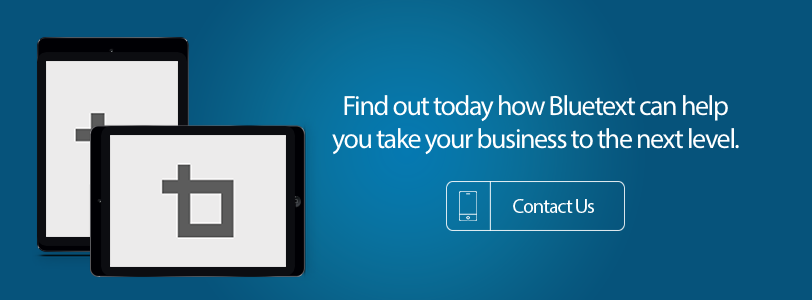At Bluetext, we know that branded name searches are the most common way potential customers, partners, prospective employees and investors will find you online. We also recognize that a change in name and brand identity can be critical components to growth in a rapidly evolving, global digital economy.
We have a trio of these unique projects right now and understand that – because a name will inevitably involve a domain change – it could have significant consequences to the search equity you have built around your current name and website. Here are the five most critical steps to minimize the negative impact of a name and/or domain change and preserve the organic search rankings, domain authority and link equity you have worked so hard to acquire:
- SEO & Inbound Link Analysis
During the initial phases of a rebranding exercise, you will likely be tempted to roll out fresh content as quickly as possible with your new website. It is important, however to begin this process with both an SEO Audit and ROT Analysis to carve out redundant, obsolete or trivial content and at the same time identify assets that your analytics can clearly demonstrate have delivered site traffic, leads and positive brand exposure up to this point.
During the brand migration process, we also recommend retaining your existing web properties for a few months and performing an inbound link analysis of the external web pages that are still linking to them. Deleting them immediately would deprive you from leveraging the link equity gained by these pages as Google begins to understand and assimilate the changes you have made in order to update your index in conjunction the new content you are rolling out.
- 301 Redirects
Because rebranding is by its very meaning the process of changing your company’s corporate name and identity – it is impossible to maintain two separate versions. Therefore, one of the most important steps to take when launching a new domain is to redirect your old URLs to their new equivalents.
The primary purpose of keeping the old content as described above is to preserve and leverage the link equity you have acquired from existing backlinks to other websites and transfer that organic value as you redirectthat page to a new one. This helps everyone – and most importantly Google – understand that both old and new domains refer to the same organization.
- Avoid 404 Errors on Deleted Pages
On the other side of that same coin, be careful not to allow pages you are deleting in the migration process to suddenly disappear – it is critical to redirect them to either the new homepage or a placeholder page on the new site – otherwise you will risk losing any equity that page once had as well as its potential for associated traffic to the new domain. Every link pointing towards your new domain has the potential to transfer incremental value to your new domain.
- Google Search Console
Google’s Search Console is by far your most critical tool for communicating a name and domain change to Google. Before your new site launches, you should ensure that both your old and new domains are verified in the search console. Once you migrate to the new environment, you can submit a change of address request through your old domain’s account to ensure that your redirects are working perfectly.
In addition, we recommend submitting the sitemap for your new domain to the search console so Google can register those changes and ultimately index your domain more quickly post launch.
- Optimize. Optimize. Optimize.
One of the most important steps in preserving search equity during the migration process – and one that is given a back seat – is the maintenance of on-page optimization after your new site is launched. This starts with optimizing your title tags for each primary keyword – this the text that Google will display as your page title for every search result – as well as the text that will display in the user’s browser when they visit your page. From there is critical to leverage H1, H2, H3 and H4 tags to reinforce your primary and secondary keywords, as well as their long tail keyword variations you want to rank for.
And finally – continue to acquire new links for your site. Each link coming in is a signal to Google that your content is valued, reinforcing how you are indexed and maintaining your position at the top of rankings for the keywords that are driving your business.
Looking for a new agency. Lets talk!
Get your mind out of the gutter. I’m talking about persistent navigation. But of course (wink)!
At Bluetext, we are designing and producing websites for the most exciting brands of all sizes across a multitude of industries. We live in the cross section of trends. We see things happening cross markets, and that can be essential when looking at user behaviors and preferences when needing to grab their attention and entice them to engage with a brand. And that means when we see a trend that is becoming more prevalent across platforms, we take notice.
The biggest new user-interface trend we are seeing today is navigation on the left side of the screen. Clients are calling this:
- Unique
- Different
- Fresh
- Smart
For us, this is going full-cycle, back to first-generation sites that were left dominant. But this isn’t your father’s left nav. These left navigation paradigms lock. They personalize. They respond to resolution and device and browser. They have many ways to expand and drill into the subpages structure of the site map with ease.
We see great brands like Qualcomm, VW, and Riverbed, all moving to left navigation systems.
Are you thinking about going left vs top for an upcoming site redesign? Here are five things to consider in making this decision:
- Is desktop a heavy user-base? If yes, then investing in slick navigation can pay off handsomely. If no, then it may not be worth the effort to do an adaptive responsive navigation module.
- Is your sitemap narrow and deep? If you answer yes, then you’re a strong candidate for a left nav.If you answer no and you have a bloated tier one navigation, then best to leave it alone.
- Does your brand logo work in the narrow navigation plate system? Many brand systems don’t contemplate this web application possibility. They also don’t have rules about stacking text about the logo mark. Or they show no name at all, just the logo icon.
- When you look at sites like Riverbed’s, you see the logo move over on scroll down. And when you look sites like ATT’s, you see they are throwing out the word all together. Just like Starbucks is doing everywhere.
- Is your target demographic a savvy web user audience? If you answer no, then consider a small user focus group to ensure they learn and adapt to the new navigation system paradigm with ease. If not, plan on going top navigation.
Here are some more sites that go left nav (or quasi left nav):
Thinking about redesigning your website. Contact Bluetext
Having worked with Drupal 8 in a production setting at one of the top development agencies for the last 15 months, I feel that I can responsibly say that Drupal 8 is ready for prime time. In fact, given all of the great improvements that the platform has to offer, it’s hard to think of an scenario where I would recommend Drupal 7 to a client. These include a standardized Symfony2 framework, a twig templating system, partial page caching, configuration management, layouts, and much more.
To learn more about Drupal 8’s new features, I spent a day recently at DrupalCon Baltimore, an experience that has heightened my excitement about Drupal and the future of the platform. Here are the takeaways that we got from the conference:
- Focus on Lowering the Barriers of Entry
- Core initiatives targeted at improving content authoring
- Revamped Release Cycles
- Drupal maturing in large enterprise
Opening the Flood Gates
The Driesnote was amazing as always. This one was more exciting than usual as there was a strong emphasis on the community and the shift for Drupal to become more user-friendly and lowering the barriers of entry. From a technical standpoint, the standardization on the Symfony2 framework and the addition of the twig templating system make working with Drupal more attractive to PHP developers, opening the platform up to a much wider developer market. From the content side, Dries highlighted the work being lead by Keith Jay to provide a better out-of-the-box experience to all users.
Content is King
In an ever changing market, it is important to stay ahead of the curve and adapt your organization to meet the needs of your client base. We validated a big shift that we are seeing in the market where the decision-maker is no longer the IT team – It has shifted to the marketing team. It is great to see Drupal follow this trend with the strong focus on the new core initiatives around UX, such as layouts and in-place editing. Dries also highlighted Cristina Chumillas for her work in improving the UX of several core pages.

Maintenance made easy
Another exciting announcement was around the revamp of the Drupal release cycles to make core upgrades for both minor and major versions of Drupal easier. The new 6-month cycles have been running great, and I for one am excited to see it. In this new model, functionality will slowly be deprecated (instead of removed) throughout the minor release versions as new functionality is added. This will give module developers an extended period of time to upgrade. Major releases will go one step further and remove the set of deprecated functionality to start the codebase off on a clean slate.
Climbing the Corporate Ladder
Drupal continues to gain traction in the large enterprise space with organizations and marketing teams looking to spend more of their budgets on content and campaigns rather than recurring subscription fees. This can be validated by the uptick in features and functionality that the community is providing for Drupal 8. As the market changes, so should the technology. The greatest thing about Drupal and the community around it is that we are the ones choosing the direction of the platform. We have thousands, or even hundreds of thousands of people validating this platform in the market and pushing the direction of the platform forward.
Bluetext continues to grow its commitment to Drupal and the Drupal community. If you are considering Drupal for your digital platform, please contact us. We would be happy to help you think through your approach to ingesting this powerful platform to power your growing digital ecosystems.
User experience (UX) as defined by Wikipedia involves a person’s emotions about using a particular product, system or service. User experience highlights the experiential, affective, meaningful and valuable aspects of human-computer interaction and product ownership. Additionally, it includes a person’s perceptions of the practical aspects such as utility, ease of use and efficiency of the system. User experience is subjective in nature because it is about individual perception and thought with respect to the system. User experience is dynamic as it is constantly modified over time due to changing circumstances and new innovations.
The two most critical points of Wiki’s definition are that users are individuals each with unique goals and behaviors – and that user experience is dynamic. In the name of user centered design principles, however; designers often segment users into personas based on similar (vs. individual) goals and behaviors that ultimately define a user experience that’s good for the masses some of the time rather than best for each individual user all of the time.
This definition of UX is also guided by the principle that there are real humans standing behind every brand or product. And while a great UX continuously learns from its users to deliver a more intuitive, human centered experience – thanks to AI – it no longer requires an actual human to deliver it.
And like AI – which ‘learns’ how to avoid design ‘mistakes’ by memorizing the experience of every user – UX is in itself a designer’s primary source of human intelligence that, if properly applied, will recognize patterns in human interaction to mitigate frustration and optimize usability.
What this means is that ideally, designers should continue to employ traditional user centered design principles to lay the groundwork for major design decisions, and at the same time, leverage AI to continuously calibrate incremental changes to that design in real time based on the individual goals and activities of every user.
The compound effect of applying AI to UX in this manner will empower designers to humanize the customer experience for each individual user and usher in a new age of a dynamic and truly utopian, user centered design methodology.
Digital marketers are struggling mightily to understand how to reach consumers and prospects across social media. A platform that looks like the dominant king one day may quickly slip behind in new adoption and usage. Today’s trends may appear to be little more than a flash in the pan tomorrow. The challenge for marketers is to understand which platforms to leverage and when to reach new audiences, especially those key younger age groups that actually are the trend setters, even when those audiences have proven to be impressively fickle.
New research of Generation Z shows just how tough it has become to discern long-term trends with social media, and confirms how fleeting its members’ infatuation with previous leading platforms really is. The survey, of more than 300 college and high school students, the core demographic of Generation Z, was conducted earlier this month by the market research firm SCG. The top findings – not too surprising: This age group loves social media, and visits its favorite platform upwards of 11 times each day. What is surprising: That platform isn’t Facebook or Twitter. In fact, these younger millennials are all about Snapchat.
According to the survey 78 percent said they were daily Snapchat users, while slightly fewer–76 percent–reported using Instagram every day. Facebook was down to 66 percent. And while that not might not seem like a huge difference, consider that Facebook is now the granddaddy of social media yet a full third of the next generation of users are not tethered to it. They really like SnapChat’s fun new features, such as the different augmented reality lenses that were such a hit last year and its Geo-fencing tool. And before feeling sorry for Facebook, its dominant position in the market, including not just Facebook but its ownership of Instagram and WhatsApp, means it will be the 800-pound gorilla in the market for years to come.
Looking for an effective approach for your social media strategy?
Give us a call and see how we can help.
Google has done it again, quietly making a significant change to the way its algorithms process Google AdWords that could be significant challenge for digital marketing if not understood and managed. At Bluetext, we closely monitor all of updates to how the Google’s search engines returns query results, and we have posted a number of blogs to let our clients know about these changes and how to address them.
This time, it’s a little different because this change, which Google announced on March 17, addresses AdWords, the tool companies use to implement their keyword purchasing strategies, rather than a revision of its organic search functionality. With this change, marketers may need to adjust their spending programs for purchasing the keywords that drive traffic to their sites.
In the past with AdWords, marketers would select a set of short-tail search terms that would be part of their search advertising mix. For example, a hotel chain might include simple key phrases like “best hotels in Nashville,” mirroring the way customers search for a list of places to stay. Up until the latest change, that exact phrase would drive the Adwords results. But Google has decided that people don’t always type their searches as that exact phrase, dropping the “in” by mistake or even misspelling it as “on.” As a result, Google has decided to expand its close variant matching capabilities to include additional rewording and reordering for exact match keywords.

What does that mean? In layman’s terms, Google will now view what it calls “function words” – that is, prepositions (in, to), conjunctions (for, but), articles (a, the) and similar “connectors” as terms that do not actually impact the “intent” behind the query. Instead, it will ignore these function words in Adwords exact match campaigns so that that the intent of the query will be more important that the precise use of these words.
Sounds like a good move, because if you search for “best hotels in Nashville” or “Nashville best hotels,” the result will be the same in AdWords.
But what if the search is for “flights to Nashville,” which isn’t the same as “flights from Nashville”? Ignoring the function words “to” or “from” would change the purpose of the query. Google says not to worry, its algorithm will recognize the difference and not ignore those words since they do impact the intent.
Hopefully, Google will make good on that promise. But advertisers who have been briefed on this revision aren’t too certain. Their carefully constructed AdWords investments might take a hit if the function words are not managed precisely to meet this new approach.
We like the old adage of “Trust but verify.” While we take Google at its word, we know there are always growing pains with these types of revisions. For our clients, we are recommending that they carefully review the terms they are including in their AdWords mix. Our advice: Be as precise as you can and factor in how these functions words might be perceived before pulling the trigger. Losing traffic to your site because of placement of a simple word should be a real concern.
Want to think more about your adWords, search and SEO strategies. Bluetext can help.
Bluetext is excited to announce that our Chief Creative Officer, Jason Siegel, has been recognized for this year’s 40 Under 40 Awards presented by DMN. The event celebrates 40 individuals under the age of 40 who not only display innovative, digital marketing techniques, but are actively reshaping the craft of the business. The DMN 40 Under 40 Awards will honor the exceptional marketing achievements of the winners on Thursday, September 29th at The Dream Downtown in New York City.
Jason is recognized for embracing the tidal shift toward technology and data-based marketing strategy that customers now demand, discovering cutting edge opportunities to reach new prospects and wow existing clients. He is acknowledged as a pioneer in web design, creative communications, and interactive strategies, continuously challenging himself and his peers to take ownership of the customer experience.
Learn more about the full list of award recipients and purchase your tickets to join the celebration here!
If you are a CMO or executive at a DC-area organization seeking to hire a digital marketing firm, do you Google search for “Top DC digital marketing firms” or “Top digital marketing firms?” Maybe you don’t use a search engine at all, but that’s a conversation for another day.
The point is that for many organizations, there is significant perceived value in having a marketing agency that is “local” – whether it’s a b2b marketing agency, b2g marketing agency or b2c marketing agency. The true value of engaging with the best “local” marketing firm as opposed to just the best marketing firm period is a more nuanced consideration that depends on the specific needs of your organization. To help with that decision, I’ve assembled five key questions to ask yourself before deciding if your marketing partner should be local:
How much value do you place on face time?
CMOs must be honest with themselves upfront about how important it is to have your marketing agency team available for in-person meetings. This should be a factor in the pre-hire evaluation phase – how big a factor is up to the CMO. It can be practically and economically unreasonable to expect a non-local marketing agency to show up on short notice, but it is also true that getting together in-person can foster improved team chemistry and allow for easier oversight.
How specialized are your marketing requirements?
As is the case with any product or service, the laws of supply and demand apply. If your organization is based in Cleveland, there will certainly be sufficient marketing agencies to choose from. But how niche is your product/service or vertical market you serve? Perhaps you need an agency with experience marketing consumer-facing ride-sharing startups, or software for the healthcare industry. All of the sudden, the list of credible b2b marketing agencies or b2c marketing agencies with this type of experience in Cleveland shrinks. It is a tradeoff for CMOs, and based on your specialized your needs are, a non-local marketing agency may be necessary to provide the expertise your organization requires.
Does your marketing agency need knowledge of the local market?
Your local market, for various reasons, may be critical to initial or long-term growth. One of the reasons that leading technology brands turn to Bluetext for b2g marketing and b2g public relations is that we’ve developed unique expertise understanding what makes this market tic and the messages required to reach and influence decision makers.
That’s just one example though; it could be that your local market is a critical early engine for customer growth, or that you need an agency that has strong relationships with local broadcast, print and online media. Even the most skilled national marketing and pr agencies will require time to ramp up in better understanding some local markets.
Do you have the right technology to manage virtual teams?
If you already work with other vendors that are virtual, then you may have the necessary technologies, tools and processes in place to effectively communicate and mange a virtual marketing agency. These tools range from conferencing and collaboration to messaging, presence, video and project management, and it is important to lock in on a set of tools that can be used across all vendors – rather than continuing to add a patchwork of standalone apps that end up complicating rather than aiding vendor communication.
There is evidence that technology vendors recognize the need for more integration. Our own client BroadSoft delivers truly integrated business communications in response to the avalanche of apps and tools that marketing departments can now choose from.
Consider these factors when deciding if a local digital marketing and public relations agency is the best move for your organization. And to learn more about Bluetext, click here:
Last week I was fortunate enough to be invited by BizBash to speak at their DC event entitled “ELEVATE”.
Elevate is a one-day conference where event and meeting professionals are able to rethink and explore the new attendee journey at events. Featuring in-depth workshops on event marketing, technology, design, sponsorships, and other topics, they discovered innovative ideas and compelling insights from the most influential names in events.
As BizBash.com describes it, “Social media has become a key component in all aspects of business, especially live experiences. Understanding new, emerging platforms and how social media and event marketing strategies merge is an integral part of the event marketing process. In this session, Jason Siegel, founding partner of Bluetext, will discuss how to develop a three-part campaign style approach to social media to maximize event reach. Siegel will share new ways to create urgency to register, how to leverage website personalization, insights on interpreting engagement, and how to seamlessly integrate virtual reality to drive interest and registrations for events.”.
The energy and buzz in the Reagan Center was very strong, and it was great to get out and meet a lot of top marketers in the field of event marketing, virtual reality, and all kinds of experiential elements. Please enjoy the presentation I gave below.
Before Twitter, LinkedIn, search engine optimization, and mobile apps there existed an individual within many enterprises that has gone all but extinct today: The public relations director. When my own PR career started on the agency side two decades ago, our in-house client contact would often include one or more professionals exclusively focused on public relations. Yes, some corporate communications positions have endured, but over time organizations saw less value in PR specialists, and more interest in hiring multi-disciplined marketing leaders and staff for which yes, public relations was one function of the broader purview. As a result, in-house PR titles have dissolved faster than the polar ice caps as it was expected that marketing professionals would come with built-in public relations skills.
A similar scenario is being debated with digital marketing leaders, as some enterprises question whether a separate position is required, or if the CMO should be expected to lead digital marketing efforts. The conversation bubbled up in an AdWeek article last week, which chronicled the departure of Umang Shah as director of global digital marketing and innovation at Campbell Soup Company. The move was announced as the company’s CMO, Greg Shewchuk, assumed digital marketing strategy responsibilities.
Addressing the move, Campbell’s spokesperson Megan Haney told AdWeek that, “Digital marketing is a core competency of all our marketers. Umang’s role was a global position that will be not be filled. What we’re doing is recruiting a team of digital experts with specialist skills to be part of our U.S. marketing team.”
Haney’s response reflects that fact that many organizations expect CMOs to arrive hard-wired for digital, and while global corporations like Campbell Soup may have a dedicated digital team, it will operate under the stewardship of the CMO.
All of this said, the shift is far from universal. The AdWeek article goes on to cite a number of marketing experts who acknowledge that while digital is an integral part of marketing, familiarity with digital channels does not by default equate to an understanding on how to best use these channels and data for maximum impact.
Organizations seeking the right balance of internal and external digital marketing strategy and execution resources should take a handful of factors into consideration:
- Have you made significant digital marketing investments that aren’t paying off?
If you have hired digital specialists and invested in digital activities but are not seeing the expected ROI, this may be an indication that the digital initiatives lack proper strategy and innovation. There can be many reasons for this, ranging from the lack of a digital director to marketing leaders that are stretched so thin that there is no way they can devote the proper time to creating and tracking digital efforts on a day-to-day basis.
- What are the core competencies of your CMO?
CMOs bring a diverse range of skill sets, and increasingly data analytics is a competency business leaders seek to analyze the efficacy of digital marketing programs. Alternatively, some CMOs with strong data chops may not have as much experience developing innovative digital marketing campaigns that encompass video, web, social, virtual reality, etc. For organizational leaders, it’s about putting together a puzzle of personnel and capabilities that can deliver the full digital and traditional marketing strategy and execution stack that leaves no gaps.
- Can and should the CMO run the digital marketing stack?
It’s not just people and process that CMOs and digital marketing directors must run, its tools as well – digital marketing technology tools that have multiplied exponentially just in the last five years. Marketing leaders could spend a good part of their day evaluating these tools and trying to figure out the right combination for their organization based on need, budget and impact.
Marketing Land columnist Jim Yu reiterates the challenge CMOs face to navigate a web of tools that often focus too little on performance-led technology that drive a healthy ROI. Yu speaks of building digital marketing stacks that can plug gaps in the “digital performance gap,” and it is worth questioning whether all of this can and should fall to a CMO versus a dedicated digital strategist.

- How much kool aid has the marketing team been drinking?
Your marketing team may know digital, and it may know your company, but does it have a firm grasp on how competitors are marketing to target audiences? And is it up to speed on digital marketing innovation that can help the organization rise above the noise in selling products and services? While digital marketing agencies may not know your organization as well as internal staff, they can offer a gut check perspective beyond what may be possible with an internal team that is “too close” to be objective.


